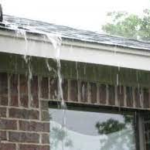Roof ventilation systems come in a variety of designs, including box vents, ridge vents, off-ridge vents, etc. Each has benefits like simple installation, visual appeal, and effective air circulation. They do, however, have disadvantages, including installation fees, potential leakage, and energy reliance.
When it comes to maintaining a comfortable and healthy home environment, roof ventilation systems play a crucial role. These systems are designed to regulate temperature and moisture levels in your attic, which, in turn, can significantly impact the general health of your house.
Installing ventilation on the roof is the most basic and essential component of the house. Through the ventilation system, hot air and moisture are removed from the home.
On the other hand, roof ventilation is required to keep the temperature within your home constant.
Ventilation can be carried out in accordance with the appropriate architectural style, roof design, and regional climate conditions. Many roof vents are highly efficient, feature no moving parts, and are animal-proof.
As you are already aware, your roof needs vents in order to prevent hot, humid air from building up in your attic, which can lead to a variety of issues, from mould to ice dams, as well as an extension of the roof’s lifespan and a reduction in the energy consumption and cost of the structure.
There are many types of roof ventilation systems out there for a variety of homes, but which is suitable for yours? We’ll go into more detail about the pros and cons of various roof vent types.
Types of Roof Ventilation Systems, Their Pros and Cons
In a bid to offer a way for outside air to enter and escape attics and ventilation rooms, air intake and exhaust vents are commonly employed in ventilating steep-slope roof assemblies.
While Exhaust vents allow exhaust to escape, intake vents work best with another form of ventilation to pull the air in and cycle it through another system to effectively cool the space.
Below is a list of the types of vents, including their pros and cons.
1. Box Vents

Box vents are among the most recognizable and commonly used static vents. These vents rely on natural convection generated by wind to expel hot air and moisture from the attic.
They are typically installed in multiple locations on the roof to maximize ventilation and can be used with soffit ventilation systems for the best performance.
These types of roof ventilation systems do not require power. Plans for open attics suit them well. The vent draws damp and heated air from the attic by allowing breezes to pass through it, and when paired with the soffit, they create a vacuum.
Pros and Cons of Box Vents
Pros
Simplicity
Box vents are straightforward and cover the highest part of the roof, allowing hot air to escape.
Affordability
They are cost-effective and easy to install.
Variety
Box vents come in different styles, making them suitable for various architectural designs.
Ideal for Complex Roofs
They work well for roofs with many valleys.
- They are also susceptible to cracks from damaging weather like hail and snow.
Cons
Limited Airflow
Due to their small size, box vents may not encourage sufficient airflow on their own.
Multiple Installations
Proper ventilation often requires multiple box vents.
Additional Equipment
You might need additional dehumidifiers and fans.
Natural Convection
Box vents rely on natural convection, which can limit their effectiveness, necessitating the installation of numerous vents.
2. Ridge Vents

Ridge vents are another type of roof ventilation system that runs along the horizontal ridge of the roof. These vents offer a discreet and aesthetically pleasing solution for maintaining even temperatures throughout your attic, preventing premature ageing of the roof.
This characteristic makes the ridge vent one of the most efficient roof venting choices now available.
Pros and Cons of Ridge Vents
Pros
Continuous Air Circulation
Ridge vents ensure uniform air circulation, preventing the formation of hot and cold spots.
Energy Efficiency
They do not require power and won’t increase your energy bills.
Aesthetic Appeal
Ridge vents blend seamlessly with your roof’s design, enhancing curb appeal.
Pest Prevention
They keep rodents out of your attic.
Durability
Ridge vents have no moving parts, reducing the likelihood of breakdowns.
Cons
Potential Leaks
Improper installation can lead to leaks during heavy storms, especially in warmer climates.
Cost
Ridge vents are usually more expensive compared to other ventilation options.
Unsuitable for Certain Roofs
They may not be ideal for non-sloped roofs without a central attic.
Complementary Vents
Often, ridge vents work best when paired with other types of roof vents.
3. Cupola Vents

Cupola vents serve a dual purpose by providing both ventilation and enhancing the visual appeal of your roof. They are generally erected with an eye toward curb appeal because they resemble little residences on the peak of your roof.
These types of roof ventilation systems are large but also very nice. The cupola vent is more common in sheds, barns, cathedrals, and outbuildings than in most houses.
However, it is an effective vent that is still in use today. The cupola vents are usually static, and their original function was to provide natural ventilation and light into an attic or roof space region through a single source.
Air flows continuously via these specific sorts of roof vents, which are located immediately on the ridge of a roof.
Pros
Aesthetic Enhancement
The ventilation and decorative purposes of cupola vents are frequently combined. As a result, you may increase your ventilation and remove the hot air from your attic at the same time.
Variety
They come in different shapes and sizes, allowing you to choose the one that suits your style.
Cons
Additional Vents
These vents are most effective when they are used in conjunction with other vents. Not all cupola vents are as functional as others and are not as reliable as using other styles of static vents.
Cost
Cupola vents can be on the pricier side compared to other vents.
Installation Difficulty
Despite being attractive to the eye, they are frequently more challenging to install and maintain. Additionally, birds may create nests inside the cupola, which obstructs airflow.
4. Power Vents

Power vents, also known as electric-powered attic vents, operate using electricity. They can be installed on your roof or gable, offering flexibility in placement and colour options.
Power vents employ electric-driven fans. They come with programmable thermostats that may be set to turn on the fan when a specified temperature and humidity are achieved in your attic. Hardwired and solar-powered powered vents are the two main categories.
a). Hardwired Power Roof Vents
This is the most common type of power roof vent. You can use this vent if you choose to use a roof that isn’t powered by solar energy. This kind of roof vent operates by being connected to a thermostat or humidistat that is directly hooked into your house.
On the other hand, a manual switch might also be used to operate them. Either a hole drilled through your roof or a gable can be used to mount the hardwired roof vent.
Also, similar to different types of roof ventilation systems, it is best to combine your hardwired vent with an intake vent, like a soffit vent.
b). Solar-Powered Roof Vents

Because they are driven by solar energy, Solar-powered roof vents are different from hardwired roof vents. These roof vents are powered in part by a solar panel mounted on the mount, which is then charged by the sun.
These vents are great if the roof of your home receives a lot of natural light, but are not the best option for you if your roof receives shadow most of the time.
In order to assist in cooling the attic or roof space, the solar panel drives the fan, which pumps large amounts of air outside. Compared to hardwired models, these usually move less air.
Pros and Cons of Power Vents
Pros
Controlled Ventilation
It can self-regulate itself with a thermostat to a specific temperature or humidity to ensure that your attic’s climate is kept at an appropriate level.
Electricity Options
They can be wired into the home’s electricity, or they can run on solar power.
Suitable for Complex Roofs
Power vents are effective for ensuring proper ventilation in intricate roof systems.
Large Fans
They are equipped with large fans for efficient air circulation.
Cons
Maintenance
One main drawback of this type of roof ventilation system is that they sometimes break down. Because it functions silently, a damaged vent may go unnoticed by the homeowner for a long time. Consequently, regular inspections are required.
Increased Energy Costs
Because they are dependent on electricity, they can produce more power and drive up energy costs by running off your home’s electricity.
Cost
Power vents with thermostats can be expensive
5. Turbine Roof Vents

Wind turbines, often referred to as “whirlybirds,” is one of the first types of roof vents. These vents require no electricity and rely on wind to spin a turbine, drawing hot air from the attic and expelling it outside.
Pros and Cons of Turbine Roof Vents
Pros
Renewable Energy Source
Using an accessible and sustainable resource as a power source is a significant benefit of wind-powered roof vents.
Efficient Airflow
These vents are common, simple to locate, and frequently circulate air more quickly than static vents due to the rotating turbine.
Cons
Wind Dependency
A major drawback to these types of roof ventilation systems is their dependency on the wind. You need to have sufficient wind in order to get the most out of them.
Additionally, they could fall apart from your roof if there is excessive wind.
Noise
The mechanical elements in wind-powered vents can get rather noisy as they age, which is another significant drawback.
6. Off-ridge vents

Off-ridge vents are less commonly known but offer flexibility in ventilation. These vents require a cutout in the roof and are typically installed near the ridge. They are long and thin, effectively removing moisture and hot air from the attic or roof space.
These types of vents are often mistaken for box vents; however, they do function in quite the same way. These are often installed near the ridge of your home’s roof and are more rectangular than square.
Pros and Cons of Off-Ridge Vents
Pros
Flexibility
Off-ridge venting is designed for flexibility, which is essential for structures with intricate or particularly steep roof designs.
Reduced Risk of Leaks
Roof leaks are Less likely With Off-Ridge Venting
Air Circulation
Off-ridge vents can create air circulation in areas where the structures around them are causing stagnation, removing musty air from every nook and cranny.
Cons
Multiple Installations
Like box vents, these types of roof ventilation systems often require several installations for proper ventilation.
7. Soffit Vents

Soffit vents offer a unique solution as they are typically installed underneath eaves or peaks rather than directly on the roof.
A soffit is a flexible material that inserts and allows ventilation. This way, They allow warm and humid air to escape from the attic before causing problems and are often used in combination with other vent types.
Pros and Cons of Soffit Vents
Pros
Increased Airflow
They are installed into a soffit, which offers you an excellent opportunity to increase the airflow through your home.
Cons
Complementary vent required
These are most effective when they are used in combination with a continuous ridge vent. So, you have to put more money into ventilation systems than others.
Conclusion
Roof ventilation systems play a pivotal role in maintaining a comfortable and healthy home environment. Selecting the correct type of roof ventilation system for your home depends on various factors, including your budget, roof type, and specific needs.
By choosing the most suitable system for your needs, you can ensure proper temperature regulation, prevent moisture-related issues, extend the lifespan of your roof, and also invest in the longevity and well-being of your home.










1 thought on “Pros and Cons of Different Types of Roof Ventilation Systems”